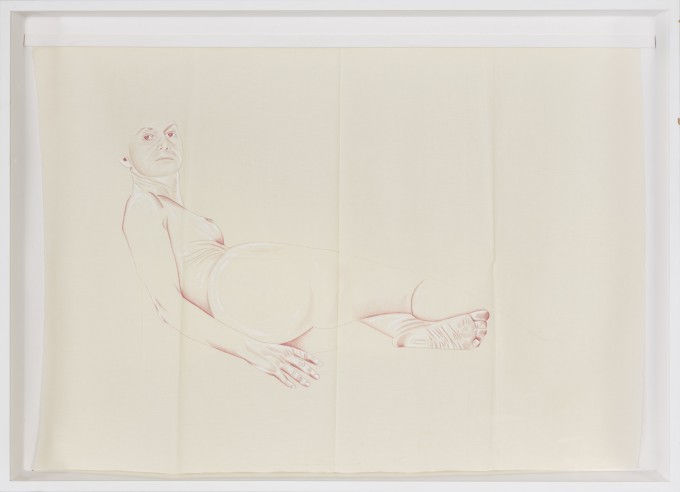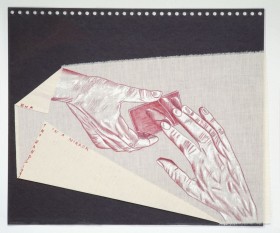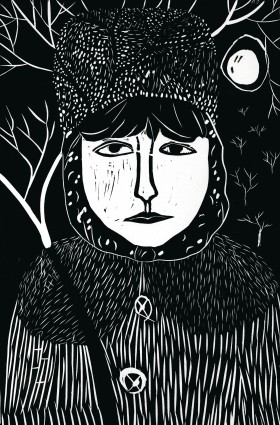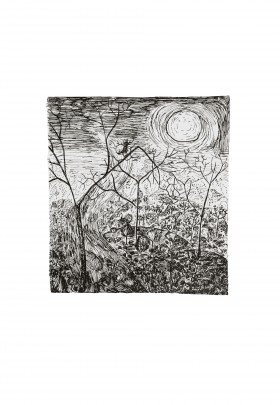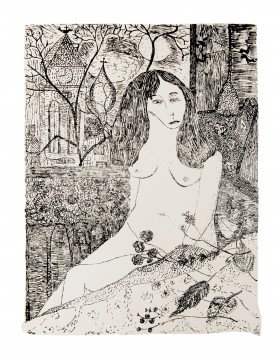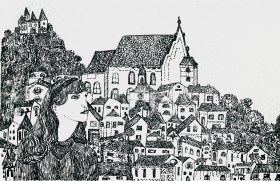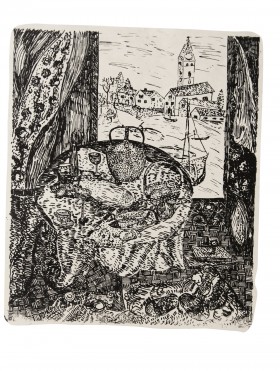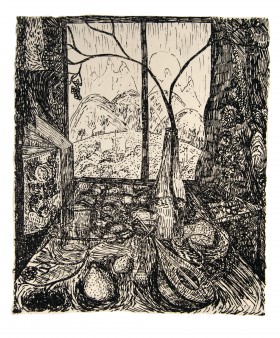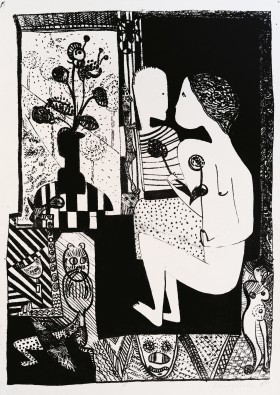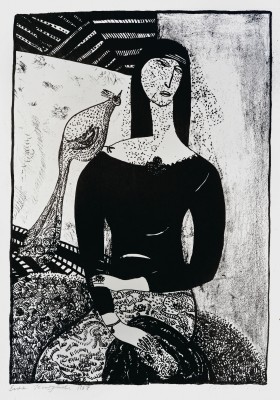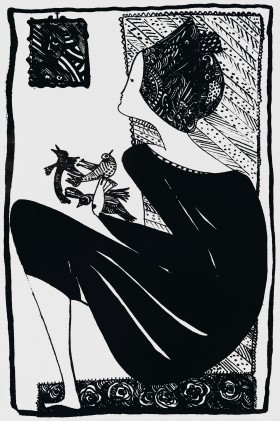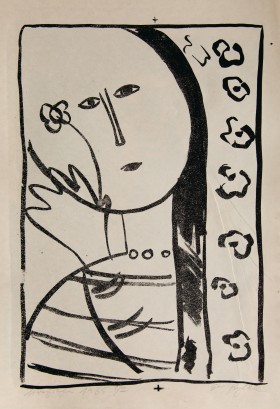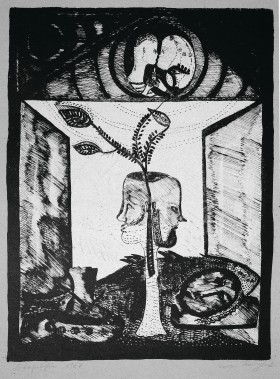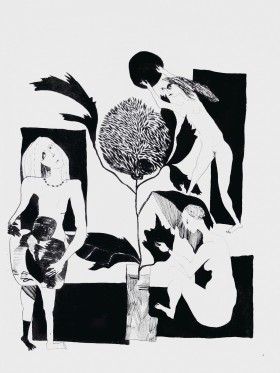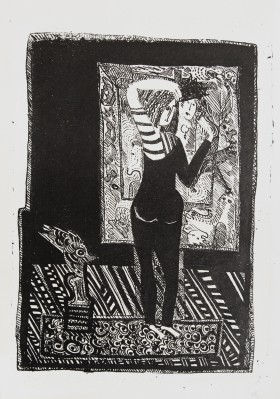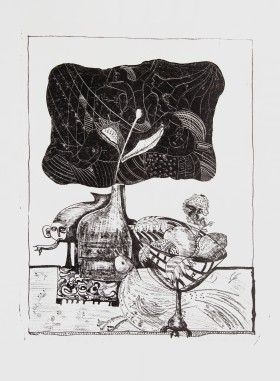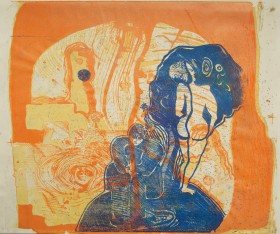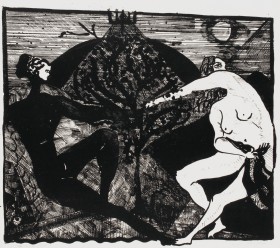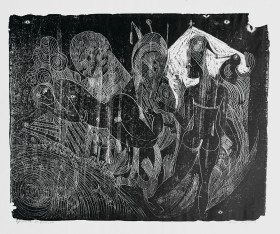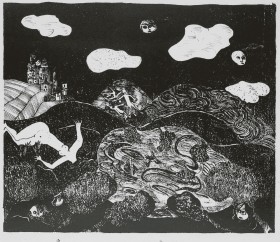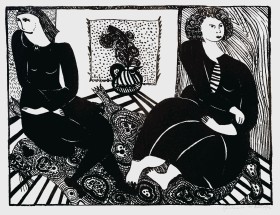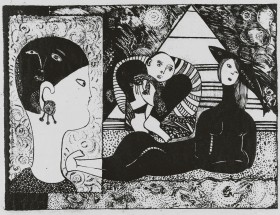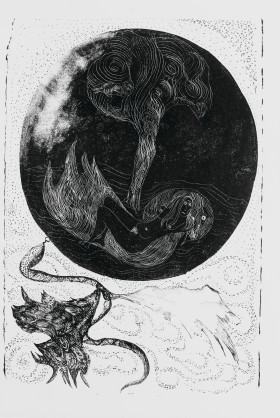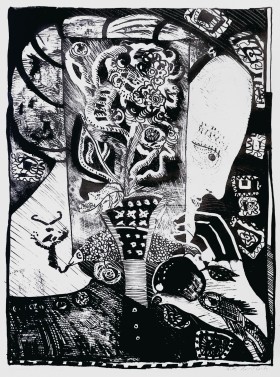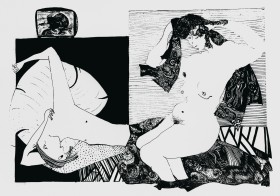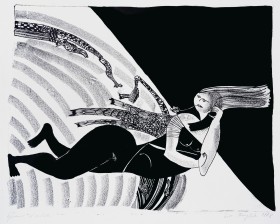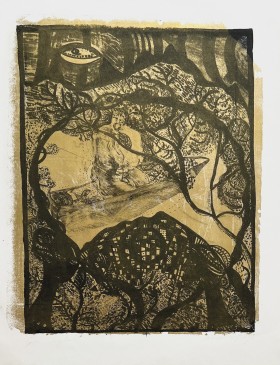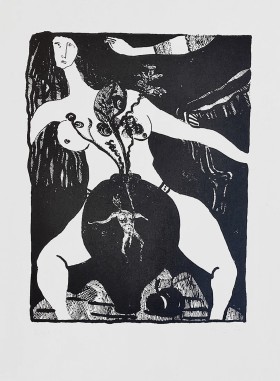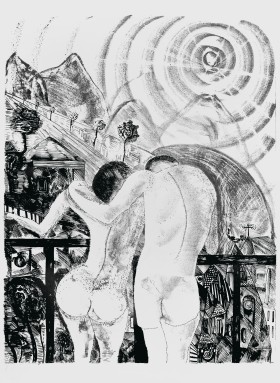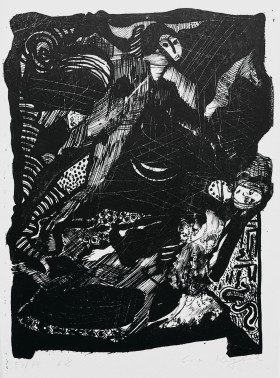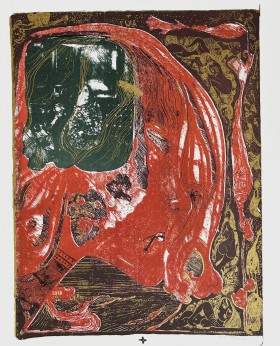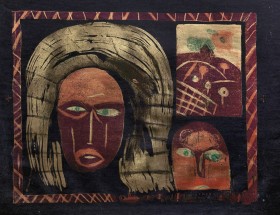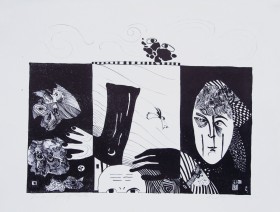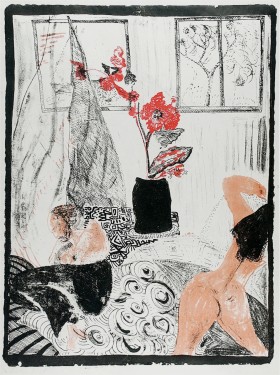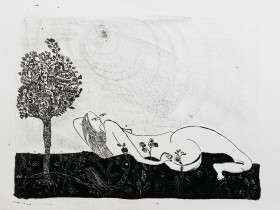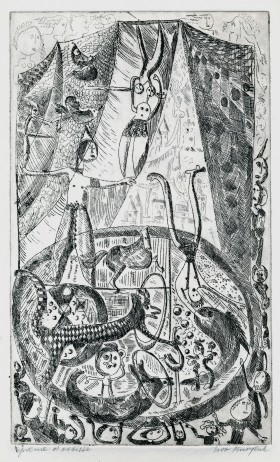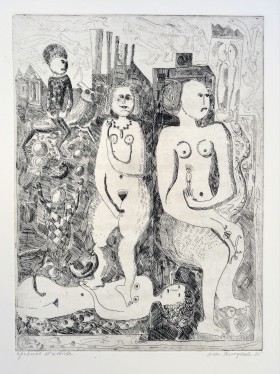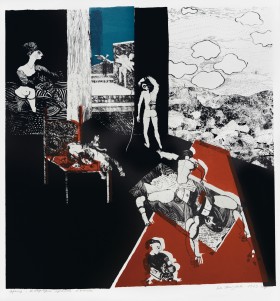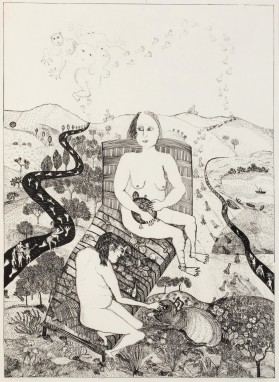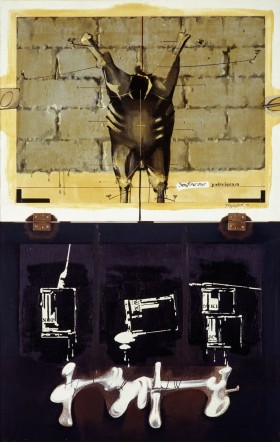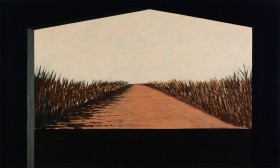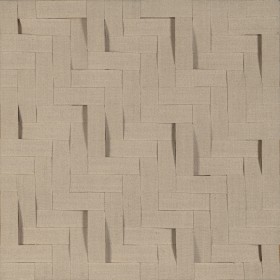Odalisque
- type of object: painting
- date: 1984
- material/technique: pencil, ink, acrylic, cotton textile
- dimensions: 122 x 173 cm
- inventory No.: M-713
- image licensed under: CC BY-SA
At the time of her graduation (1970), Ewa Kuryluk was painting pictures classified as part of the circle of new figuration. However, in the late 1970s she gave up easel painting and began drawing figures on pieces of cotton or silk — these materials could be spread out on chairs, the floor, hung on walls or trees. It is worth noting the connection between fabric and the female experience, as well as the popularity of this medium in Polish postwar art (the artist herself claims that she was encouraged to use textiles by an accidental visit to a fabric store in Łódź).
Odalisque (1984) is a drawing on cotton calico, depicting a woman, most likely made from a photograph. The choice of this type of substrate is not accidental, as, according to the artist, it ‘arranges itself into a sculpture’. It is unbleached, beige, sandy, yellowish, rusty, pinkish, which smells of straw and hay. Kuryluk draws on the calico with a red pen. In her work, she often uses the colour pink, a sign of salvation and hope for her, and — both joyful and melancholy in its expression — white. An odalisque is a white slave or concubine in the seraglio of a Turkish sultan. This motif fascinated many European painters: François Boucher, Jean-Auguste-Dominique Ingres, Auguste Renoir — and in Poland, Teodor Axentowicz and Tytus Czyżewski, noting above all the sensual-sexual context of the depiction. The outline of the female body, traced by Kuryluk in red, indicates the suffering of this figure.
Describing her textile works, Ewa Kuryluk speaks of ‘the desire to make a copy of an individual’s unique fate in art, to record their contour and gesture, their heartbeat and words, their shadow’. She refers here to the veil of St Veronica, on which the image of the suffering Christ was imprinted (she is also the author of the book Weronika i jej chusta. Historia symbolizmu i struktura „prawdziwego obrazu” [Veronica and Her Veil: The History of Symbolism and the Structure of the ‘True Image],1998). However, the artist strips this motif of its sacred character, equipping it with a sexual charge. In Odalisque, however, one can see a greater fascination with another topos of European culture: the story given by Pliny the Elder about the Corinthian girl who outlined the shadow of her departing lover on the wall (the artist is the author of the work I’m Outlining the Shadow, 1978; a year later she also published a volume of poems, Kontur [Contour]).
Karolina Zychowicz
translated by Paulina Bożek
